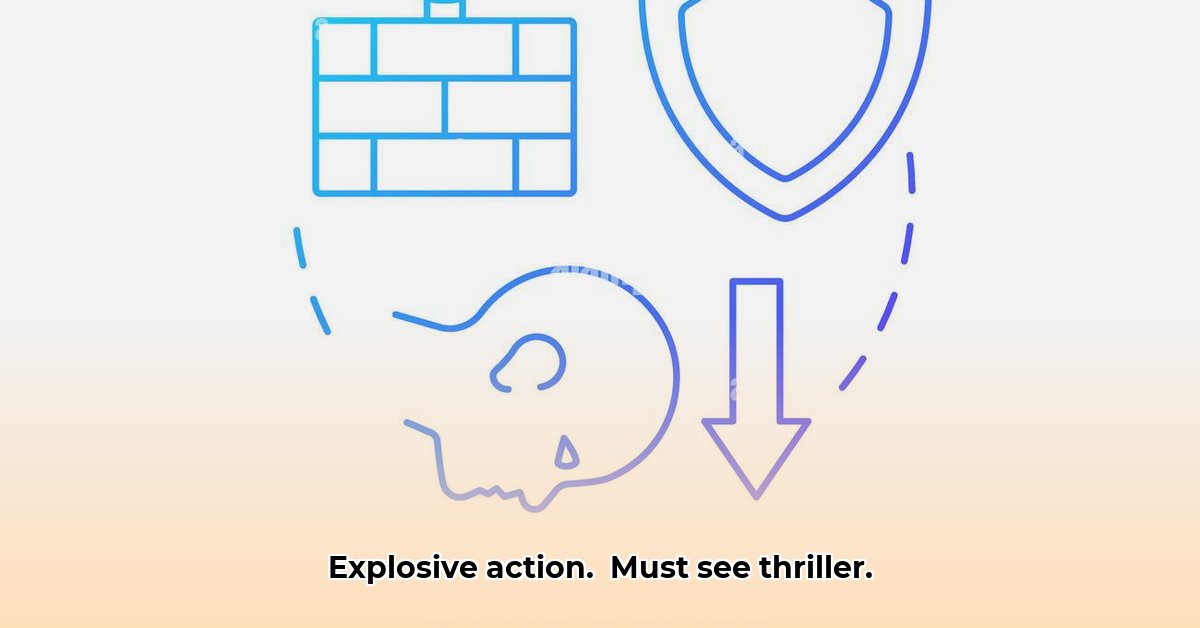
Take Cover: A Claustrophobic Showdown
Take Cover isn't your average action flick; it's a high-octane thriller playing out entirely within the confines of a glass penthouse. This ain't no wide-open landscape shoot-out; we're talking pure, unadulterated tension, a masterclass in claustrophobia. The film follows a jaded hitman trapped in this glass prison, facing impossible odds in a "hit gone wrong" scenario that’s amplified by its uniquely confined setting. The core premise – a seasoned professional battling for survival in an inescapable situation – is instantly gripping. But does the execution match the promise? Let's delve in.
The Good Stuff: A Masterclass in Tension
The film's genius lies in its masterful use of the penthouse setting. This glass box isn't merely a location; it's a character in itself, a constant, looming threat. Every creak of the glass, every shadow cast by the city lights, ratchets up the tension, leaving you on the edge of your seat. Imagine the pressure: hundreds of feet in the air, no easy escape, and danger lurking at every turn. The filmmakers expertly utilise this claustrophobic environment to build suspense, creating a palpable sense of dread. The action sequences are short, sharp, and brutal – intense bursts of adrenaline that leave you breathless. The dynamic camerawork mirrors the protagonist’s desperate struggle, pulling you directly into the heart of the action. It's a sensory assault designed to make you feel the protagonist’s predicament. The clever editing further enhances the visceral experience.
The Not-So-Good: Where the Film Falls Short
While the action is undeniably gripping, some aspects of Take Cover fall short. The supporting characters feel underdeveloped, remaining shadowy figures flitting around the main character without ever truly coming into focus. Their motivations lack clarity, leaving significant narrative gaps. This lack of depth ultimately impacts the overall narrative flow. Moreover, while the initial premise is captivating, the plot itself contains some noticeable holes. The “hit gone wrong” storyline isn't fully explored; many crucial elements are implied rather than explicitly shown, which can be frustrating for viewers seeking a more complete picture. This ambiguity leaves a few loose ends that hamper the overall impact.
The Verdict: A Thrilling, Flawed Gem
Take Cover is a bold, risky experiment that mostly pays off. The filmmakers cleverly embraced the limitations of the setting, resulting in a unique viewing experience. The action is breathtaking, and the tension is almost unbearable. However, this intense focus on the setting comes at a cost – a slightly underdeveloped narrative and some frustratingly vague plot points. It's a thrilling ride, punctuated by moments of intriguing suspense and frustrating ambiguity. I'd give it a solid 3.5 out of 5 stars. It delivers on the promise of relentless action but leaves you wanting more in terms of a richer, deeper narrative.
How Does It Compare?
Take Cover shares a common thread with other successful action thrillers that utilise confined spaces, such as Phone Booth and Buried. Like those films, it masterfully uses the feeling of entrapment to build suspense. But whereas Buried focused almost entirely on psychological tension, Take Cover opts for a more visceral approach, prioritizing raw, brutal physical action. This shift in focus, while undeniably thrilling, sacrifices some of the psychological depth found in films like Buried.
Final Thoughts
The film's success hinges on the strength of its premise and how effectively it was marketed. A deeper exploration of the characters’ backstories could have profoundly impacted the audience’s emotional connection. The potential for a sequel likely depends on the film's box office performance. For now, Take Cover stands as an exciting, albeit slightly flawed, action thriller. It's worth watching for fans of high-stakes action but doesn't offer the deep emotional resonance of other thrillers in the genre. It's all about the pulse-pounding adrenaline. It's a reminder that, even in a claustrophobic setting, a well-developed narrative is paramount.